I've noticed that my students are not so great at critical thinking, and they rely heavily on gestures to describe their ideas instead of using the words they know. This game was a great way to force them to actually talk. They had a ton of fun with it and enjoyed the challenge!
For context's sake: I played this with second years at my academic high school. Their English is about lower-intermediate - intermediate. We've been practicing writing and using very clear, specific details to give more information about their main points.
You Will Need:
- Word cards; 1 deck for each group
- Vocab Cheat Sheet; 1 for each group
- Several similar but different household objects. I used a teacup, a paper coffee cup with a plastic lid, a PET bottle, a rice bowl, and a desktop trashcan
Warm-Up
Line up your objects on the podium so all students can see them.
Hold up one object and ask the class, "What is this?" They'll respond pretty quickly. They don't have to be too specific with the type of thing that it is, just name the general category. I held up a teacup and my students said "cup," "teacup," and "mug." I went with the most general word, cup
Write the category on the board. Then ask, "How do you know this is a ______?"
This is the tricky part! The students will immediately jump into gesture mode and mime a shape or an action. Mime it back to them and ask them what that means. Play the fool whenever they gesture. They need to put that idea into words! For the teacup, my students cupped their hands or told me simply, "shape." So I asked them, "What do you mean, what shape? What is this shape? Describe the shape to me." Let them talk it over with their peers for a minute or so.
Most likely they will need more prompting, so give them some questions to think about out. For the teacup, they were focused on the shape, so that's where I started, then I moved onto function. Write their answers on the board beneath the object category.
Is it flat or curved? Curved. Where is it curved? On the sides and the bottom and the handle. Oh, so cups have curved handles? Yes. Is it an open shape or a closed shape? Open. Is it full or empty? Empty. What goes inside? Tea or coffee. Only tea or coffee? Nothing else? Any liquid. Oh, okay, liquids go inside of cups. How do you use a cup? You drink from it.
When you think you have enough descriptions of the category, move on to an object in the same category that looks vastly different and ask again, "What is this?" I moved onto the paper coffee cup, and again the students answered, "cup." But they look so different! How do you know this is a cup, too?? Challenge some of their descriptions here. There's no handle. There's a lid on top, so is it closed or open? The bottom is flat, not curved. Etc.
Continue this process with the other objects of similar shapes or functions. Point out similarities and differences. For example, the desktop trashcan and the rice bowl look a lot like cups, so how do you know the difference? Write the categories on the board and the descriptions that the students come up with below. This whole process should take about 15-20 minutes or so.
Activity
Put the students into groups of 4-6. Number the groups and write their numbers on the board to keep track of points.
Give each group a cheat sheet and a deck of word cards. Shuffle the cards and deal out the whole deck to everyone in the group. They cannot look at their cards! The cards must remain face-down in front of them.
Students janken to choose the first guesser.
The guesser will take the top card off their deck and place it up on their forehead. Not in front of their face where they can see through the paper, but on their forehead. Their fellow group members must describe that object in English only until the guesser guesses the word. The cheat sheet 「カニングペーパー」is there to help them guess. Everyone must speak in English only, including the guesser! They need to do their best to match the English pronunciation. Do some quick pronunciation practice if necessary.
Absolutely NO gestures may be used! The others in the group should put their hands on their head or sit on them or hold them behind their back. Nodding yes or no is fine, but they cannot sway or wave their elbows or jerk in a particular direction. They need to really describe the object on their card!
The first round will last 3 minutes. The guesser must guess as many words as possible within those three minutes. Only one guesser per round. If they get through every card, then hang tight and wait. Do not proceed to the next guesser yet!
When the timer goes off, all cards go down! Count the correctly guessed cards and tally up the points on the board.
Now it's the next guesser's turn. Judge the time for yourself and your class. If most groups are getting through each pile pretty quickly, lower the time to 2 minutes or whatever you think is best. Continue until each person has had a chance to be a guesser. If you have time left, play again or do a lightning round!
And that's all! Hope it works out well for you!
